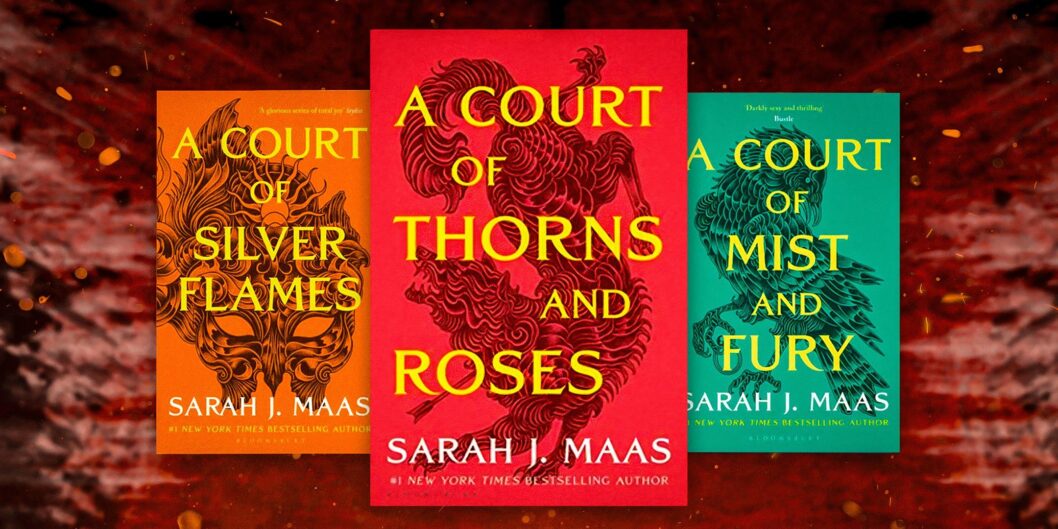The Need for Character Consequences in Sarah J. Maas’ A Court of Thorns and Roses Series
In the realm of fantasy literature, few series have garnered as much attention and fandom as Sarah J. Maas’ A Court of Thorns and Roses (ACOTAR). Known for its rich world-building and compelling characters, the series has captivated readers since its debut in 2015. However, as the narrative unfolds across five volumes, a notable criticism emerges: the lack of high stakes due to infrequent character deaths that create real emotional impact. This raises significant questions about narrative tension and character development in the beloved saga.
A Pivotal Scene Exposes the Stakes
The critique surrounding character mortality is best illustrated through a harrowing scene from the first book of the series. Here, a fae from the Summer Court is presented after being viciously tortured by the villainous Amarantha. The act of cutting off his wings serves as a visceral demonstration of the threat Amarantha poses. Feyre, the protagonist, and Tamlin, her love interest, experience profound emotional turmoil during this scene, defining its importance: "My wings," the faerie choked out, his glossy black eyes wide and staring at nothing. "She took my wings." This moment not only amplifies the emotional depth of the story but also highlights how the series could benefit from more impactful character deaths that elevate the stakes.
Despite this scene’s intensity, it marks one of the few genuine losses in the ACOTAR series, offering a stark contrast to the relative safety enjoyed by the main characters throughout the narrative. For readers, this inconsistency can create a sense of detachment from the unfolding drama, as major characters rarely face irreversible consequences for their decisions or confrontations.
Missed Opportunities for Emotional Depth
The emotional void left by the rarity of character deaths is evidenced by the overarching trend in the ACOTAR books. Most characters who encounter danger experience miraculous recoveries, a storytelling pattern that diminishes the narrative’s emotional weight. The only other impactful death in the series, that of The Suriel, does not hold the same significance due to its transient nature in the overall plot.
A recurrent observation among fans and critics alike is the potential narrative advantage of incorporating character deaths. As one critic notes, “There are plenty of moments throughout Maas’ ACOTAR books where one of the major characters should have died — and while it would have been hard to lose such them, the emotional depth it would have added to the story would have been advantageous.” Deaths could serve not only to increase tension but also to add authenticity to the stakes faced by the characters, making each victory feel earned rather than inevitable.
Future Prospects for Character Development
As the anticipation builds around a potential sixth installment of the series, speculation arises regarding whether Maas will address these shortcomings. With Elain’s story rumored to be central to the next narrative, there exists a unique opportunity to incorporate significant character arcs that could involve risky decisions and potential sacrifices. This could provide the series with the tension and emotional resonance that many readers feel it currently lacks.
The future of the ACOTAR series remains uncertain, but the feedback surrounding character mortality is compelling. Many fans are eager for a narrative that doesn’t shy away from the real consequences of conflict. As expressed by dedicated followers of the series, the hope is that Maas can turn the tide in forthcoming books by delivering on the promise of high stakes — perhaps through the brave, poignant, and even heroic deaths that resonate with audiences and elevate the story’s emotional landscape.
Conclusion: Reflections on Narrative Stakes in Fantasy Literature
The conversation surrounding A Court of Thorns and Roses and its handling of character deaths highlights a prevalent issue in contemporary fantasy literature: balancing character safety with storytelling stakes. While the series has managed to build a rich, immersive world, the emotional stakes risk being diluted without genuine character losses to drive the narrative forward.
In the larger context of fantasy storytelling, the implementation of impactful character deaths can significantly enhance reader engagement by forging deeper emotional connections with the narrative. The success of this series in future installments may depend significantly on how well Maas can navigate this complex landscape, potentially redefining not just her own work but also shifting broader trends in the genre. As the fandom waits with bated breath for what comes next, the series’ capacity for emotional depth and tension remains at the forefront of discussions.









